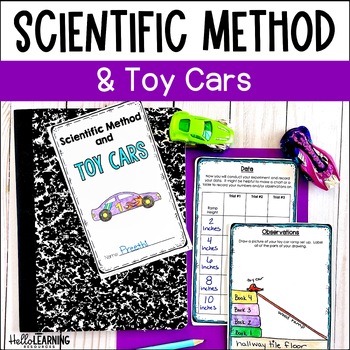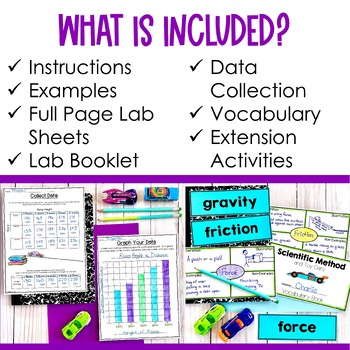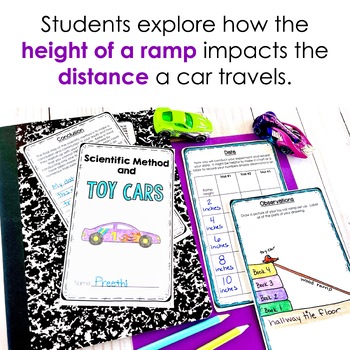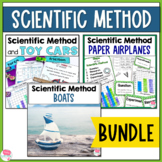Scientific Method Activity - Easy Force and Motion Experiment for Newton's Laws
- PDF
What educators are saying
Also included in
- This bundle of easy science experiments to teach the scientific method includes 12 science units that will have your students engaged in learning and excited about the scientific method. These science activities are easy to use and create fun and memorable learning experiences!⭐⭐ Save 25% of the priPrice $37.97Original Price $51.15Save $13.18
- Your students will love the scientific method when they experience these engaging and easy science experiments. Students will experiment with paper airplanes, cars, and boats while learning about the scientific method and variables.Save over 20% of the price of the individual units by purchasing allPrice $10.00Original Price $13.00Save $3.00
Description
This scientific method activity gives your students an easy science experiment using toy cars to explore the steps of the scientific method. Science concepts like friction, force and motion and Newton's Laws come to life in this fun experiment!
Click on the PREVIEW button above to see what is included!
⭐ What is included:
- teacher directions
- sample schedule of activities
- materials list
- vocabulary cards and student vocabulary booklet
- data collection and graphing sheets
- worksheets for friction, force and motion
- Newton's Laws of Motion posters
- Newton's Laws of Motion student worksheets
- steps of the scientific method vocabulary cards
- scientific method worksheet (two levels for differentiation)
- discussion questions
- written student response sheets connected to discussion questions
- variables sheet- independent, dependent and controlled variables
- Two versions of the scientific method student lab sheets: full page and half page booklet options
- written response activity
⭐ This resource contains two investigations.
- One investigation is lead by you as a guided experiment. Students will investigate how ramp height impacts the distance a toy car will travel. Students gain exposure to new concepts, and practice following the scientific method as the teacher models quality questioning, writing and procedures.
- The second experiment releases some of the independence to the kids as they design their own investigation to learn about how weight or friction impact the distance a car will travel when released on a ramp.
⭐ Depending on the level of your students, you could:
- choose to have them do the first experiment in a whole group/guided format and the second independently or in small groups
- do both experiments in a guided/whole group format
- do both experiments independently or in small groups.
⭐ Concepts covered include:
- force and motion
- friction
- inclined planes/ramps
- Newton's Laws of Motion
- following the steps of the scientific method
- measurement
- collecting data
- graphing
- analyzing data
You may also like:
Scientific Method and Paper Airplanes
Scientific Method and Candy Worms
Follow me and be notified when new products are added to my store.
New products are always 50% off for the first 24 hours they are posted!
Thanks!
Dawn - Hello Learning
⭐⭐ Did you know that leaving feedback on your TpT purchases earns you credits that will save you money? Go to your ‘My Purchases’ page and leave feedback on the resources you’ve purchased to earn TPT credits toward future purchases!







